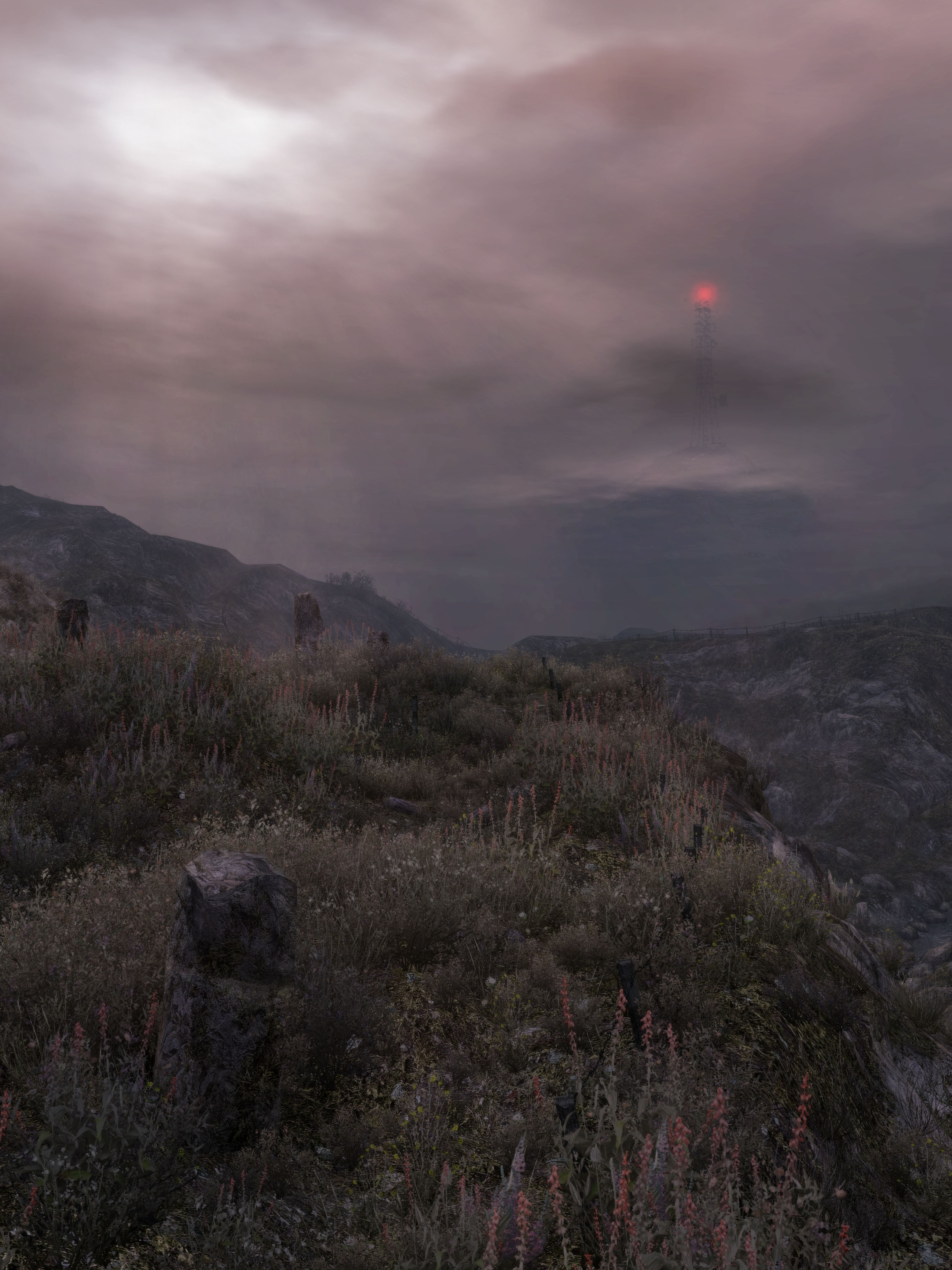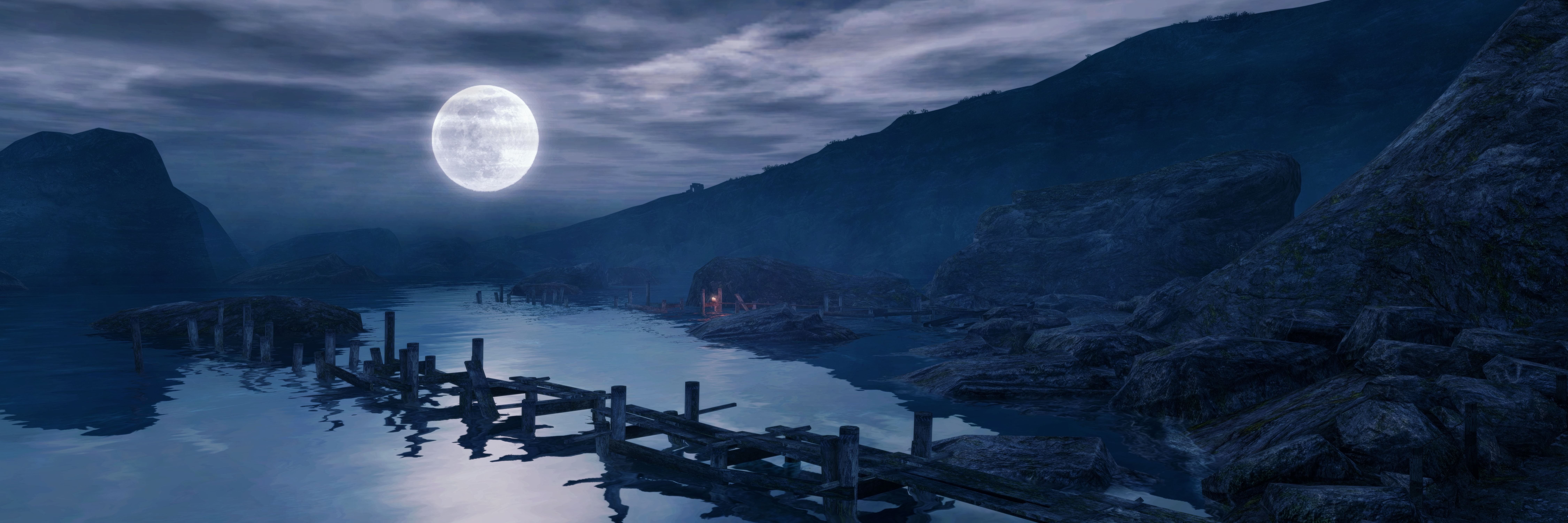His main inspiration was the “quiet moments” that he found throughout games, even in the first person shooters that he was studying. “A lot of the call to action feedback loop falls away and you’re just kind of left. There’s those moments of real stillness where it’s just you and the world, and they’re really, really, really powerful.” He wanted to know whether a game could be made entirely from these atmospheric moments. “What if it was just that? Would that work? Would that be something that would be engaging?” It was engaging. Combining Pinchbeck’s writing with the work of student artist Josh Short and developer Adam Griffiths, music by Jessica Curry, and voice acting by Nigel Carrington, the release was widely praised by the modding community. “People just seemed to really get it in a way that I wasn’t really expecting,” Pinchbeck says. “But you look back on it and you go, well, why did it work? Because it worked in those games that I loved already.” Maybe the mod’s popularity ought not to have been a surprise in retrospect, but at the time it certainly was. “I thought we’d probably get a couple of hundred downloads and people would tell us what was wrong with it,” Pinchbeck says. “Which they did!” But all of the feedback ended up being useful as Dear Esther grew from an unexpectedly popular mod to something bigger. “Rob Briscoe got in touch,” he recalls. “He had just come off Mirror’s Edge and was looking for a downtime project. A little thing that he wanted to do in his spare time.” He asked if Pinchbeck and the others would be interested in him redoing the art for Dear Esther, which to that point had been mostly reusing Half Life assets. “Obviously, Mirror’s Edge is beautiful and we’re not going to turn away when a Mirror’s Edge artist goes, ‘Can I reskin your work?’” Pinchbeck says. After a year or so, seeing the quality of the art Briscoe was producing, the team started to think about exactly how far they could go with it. “We were sitting there going, this feels really weird that this is so good and no one had really been paid for the mod,” Pinchbeck says. They started looking into investments that would allow them to eventually release Dear Esther commercially, by paying for things like the Source engine and hiring musicians to make Curry’s soundtrack really shine, and were eventually supported by Indie Fund. “Really, the aspirations were still really pretty modest,” Pinchbeck says. “We still expected we would hopefully shift a few thousand copies.” Before release they had some reasons to be optimistic, with press coverage and a notice from Valve that they would be put on the front page of Steam. “But even then we thought, it’s so experimental, it’s probably not gonna do very much.” They sold enough copies to pay off the investment within six hours. “That first night was just kind of sitting there watching the numbers and going, ‘Okay, this isn’t what we were expecting to happen at all!’” Throughout all of this process, Pinchbeck says, The Chinese Room (now about to release Little Orpheus on PC) was still essentially a part of the University of Portsmouth, where he was pursuing his PhD. It wasn’t until after they had worked with Frictional on Amnesia: A Machine For Pigs and had been approached by Sony about making what would eventually become Everybody’s Gone To The Rapture that they became a more formal studio. “We were pretty nervous about taking that jump,” he says. Rapture, which released in 2015, was an evolution on the ideas behind Esther, as well as the studio’s continued thinking about what games could provide that other mediums can’t. “What if we had something that was kind of ‘Dear Esther-y’ but the whole thing is non-linear,” Pinchbeck summarises. Instead of pieces of story being randomised by the system, as happens in Dear Esther, Rapture allowed the player to find them themselves in whatever order they like. “A lot of people said about Esther, ‘Oh, you could have just done it as a film.’ You couldn’t, because of the randomisation, but with Rapture there was just absolutely no way it was ever going to be anything other than the game.” More recently, though, Pinchbeck thinks that the industry has shifted away from the cultural moment that led to Dear Esther. He thinks the game came out in “a bit of a zeitgeist” for discussion around how important story was to games. Both indie and AAA developers were “seeing the idea of using your emotional connection to the characters in the game,” he says, citing Uncharted and The Last of Us as major examples in the AAA space. “I always felt sort of vindicated in terms of my PhD when [those] came out because I was like, that’s exactly what I’m talking about!” he laughs. “Quietness, stillness, reflection, emotional connection, [these are things now] you see as being fairly standard in a lot of designers’ tool kits,” he says. “I don’t think that was just due to walking simulators, I think other games were heading in that direction as well. I think there was a bit of a wave, and walking simulators were kind of the outer edge of that wave. But a lot of people were moving in that direction.” “I’m really happy to see real character-driven drama in games and a much greater sense of diversity of voices, and of stories,” he adds. “Obviously we’re got a very, very long way to go still, but it’s a very different industry than it was 10 years ago which can only be a good thing.” And the recent anniversary has given Pinchbeck a moment to pause and look back on that decade, and Dear Esther’s place within it. “I’ve had to kind of pinch myself a couple of times and go, ‘that was strange. That was quite a ride.’”

